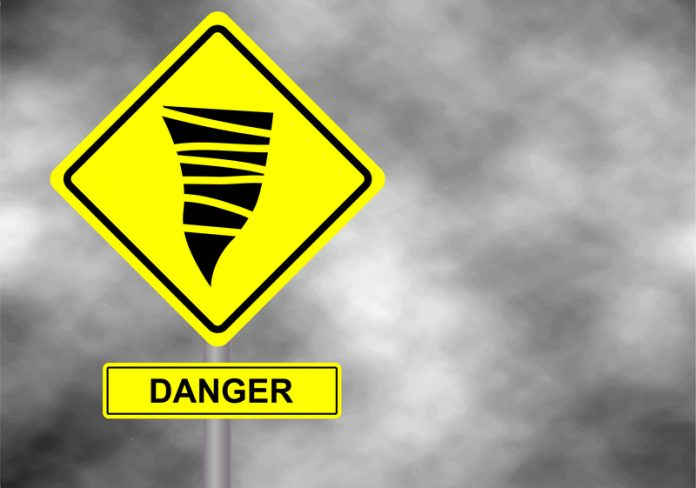
Mario Marcello Miglietta from the Institute of Atmospheric Sciences and Climate (ISAC-CNR), and Richard Rotunno from the National Center for Atmospheric Research (NCAR) outline why there is a need to develop tornado warning systems in Europe
The internet has become an important source of information for anyone who wants to investigate tornadoes and severe storms. As tornadoes typically cover a limited geographical area, they are generally not detected from synoptic-, and even regional-scale, meteorological station networks. Thus, historical events have been generally identified based on newspapers articles and chronicles. The possibility offered by the internet to post and share information has made images and videos of tornadoes and waterspouts the preferred way to document the occurrence of these events.
The opportunity for everyone to contribute to tornado statistics has dramatically increased the number of reports all over the world. Even in regions usually considered unaffected, or only somewhat affected, by tornadoes, such as the Mediterranean, it has become apparent that their occurrence has been largely underestimated. Together with weak waterspouts and tornadoes, large and intense vortices are occasionally observed in Europe but they have generally received limited attention from both the general public and scientists.
A couple of recent events have reinvigorated the sense that severe tornadoes may occasionally occur in the Mediterranean region, sometimes producing remarkable damage and even casualties. On 8 July 2015, an EF41 tornado struck the outskirts of Venice, causing one death and 72 injuries, and destroying an old villa dating back to the XVI century. On 28 November 2012, a multi-vortex EF3 tornado affected Taranto, southeastern Italy and was one of the largest tornadoes on record in that region. This tornado caused one death and estimated the damage of €60m to the largest steel plant in Europe.
The latter event showed peculiar characteristics, which attracted deeper investigation. In fact, the tornado of Taranto took extraordinary horizontal dimensions (among the largest ever photographed in Europe) similar to the so-called “wedge” tornadoes in the USA plains, since the diameter of its visual funnel appeared to be about 700m wide. The presence of a multi-vortex structure was recorded, with some minor vortices revolving around the parent vortex, that in some cases were temporarily able to touch the ground, typical behaviour for the most intense of these events. The duration was also particularly long, as the damage was reported nearly 50 minutes after, and about 50km away from, the location of landfall.
The increase in wind speed with altitude in the lower 1km (the so-called “wind shear”, one of the most important ingredients for tornadic thunderstorms) was extraordinary, compared with previous cases in Italy as well as cases from the extensive dataset of events available in the USA.
Issuing skilful alerts for the prediction of these events requires several obstacles to be overcome, such as the identification of the most recurrent large-scale conditions conducive to risk scenarios and a deeper understanding of the relevant mechanisms necessary for their development. Considering that in the Mediterranean-area tornadoes occur mainly near the coast, we expect that the sea and the surrounding orography play an important role, thus the theoretical framework, developed for USA Midwest severe convective weather, should be properly adapted to the peculiar and morphologically different conditions of the Mediterranean. For example, in the case of the Taranto tornado, the high surface temperature of the Ionian Sea during the event (about 2 °C higher than climatology) may have played an important role in producing intense heat fluxes and in providing energy to the parent thunderstorm of the tornado.
The high-impact of these recent events emphasise the need for the National Weather Services to provide a warning system dedicated to the monitoring and prediction of such severe localised convective events. In the majority of European countries, there are no procedures to warn for tornadoes, which we think is inadequate considering their potential threat. We believe the development of such a warning system cannot be further postponed, due to the dramatic social impact of severe weather, which could possibly be exacerbated in a changing climate.
A potential model for this office could be the USA Storm Prediction Center (SPC),2 a forecast centre in charge of issuing convective outlooks, mesoscale discussions, and watches. The European Storm Forecast Experiment 3 is experimenting with a European version of convective-weather outlooks at a continental scale. However, a warning system able to provide alerts at the national level, providing information at finer horizontal and temporal scales is desirable to issue warnings for selected regions that can take into account the inhomogeneity of the Mediterranean basin, similar to the practice of the Bureau of Meteorology in Australia.
Finally, the population needs to be educated to deal with severe weather alerts. The recurring floods in the Mediterranean area in the last few years have surely increased the awareness of the risks and started to suggest the adoption of a more precautionary behaviour in cases of severe weather. However, there is still a long way to go to reach an acceptable level of public awareness. Increased consciousness of severe weather threats, including tornadoes, is a necessary objective. This task requires some substantial background research, not just in meteorology but in social science, identifying whether a hazard-information flow, substantially different from the system adopted in the USA, may be needed given the cultural differences that may affect how information is received by the user community.
1 EF: stands for Enhanced Fujita. It is the most widely used scale (from 0 to 5) that estimates the tornado wind speed, based on the damage caused to buildings and vegetation.
Mario Marcello Miglietta
Institute of Atmospheric Sciences and Climate
M.Miglietta@isac.cnr.it
Richard Rotunno
Senior Scientist
National Center for Atmospheric Research (NCAR)
rotunno@ucar.edu










